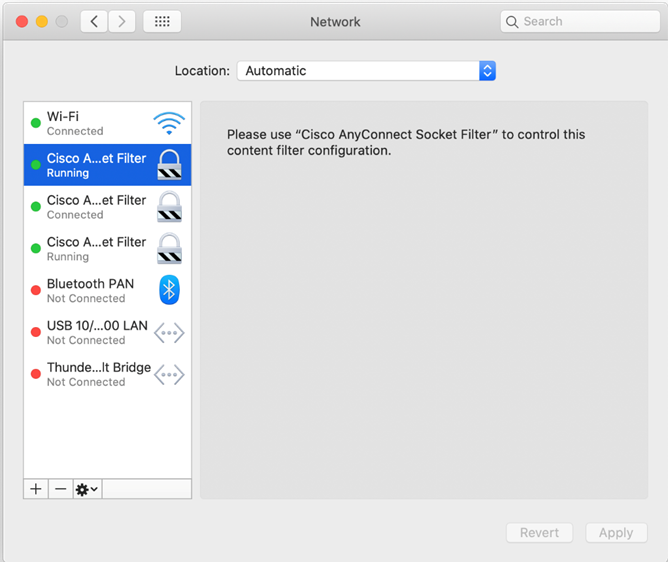

The first colum contains the current process id.

We received one line of output, which means that our job is currently loaded.If multiple intervals transpire before the computer is woken, those events will be coalesced into one event upon wake from sleep. Unlike cron which skips job invocations when the computer is asleep, launchd will start the job the next time the computer wakes up. Steps are also permitted after an asterisk, so if you want to say "every two hours", just use "*/2". For example, "0-23/2" can be used in the hours field to specify command execution every other hour. Following a range with "/" specifies skips of the number's value through the range. Step values can be used in conjunction with ranges. A list is a set of numbers (or ranges) separated by commas. For example, 8-11 for an "hours" entry specifies execution at hours 8, 9, 10 and 11. Ranges are two numbers separated with a hyphen.
#Enable cisco anyconnect os x web launch manual
The following description of the cron time specification was taken from the cron manual page: FieldĪ field may be an asterisk (*), which always stands for "first-last". If the process tries to extend its stack past this size, it gets a SIGSEGV signal. This parameter is a guide for the system's scheduler and memory allocator the system may give the process more memory when there is a surplus. The maximum amount of physical memory in bytes that this process should get. If you have reached the limit for your user ID, fork will fail with error EAGAIN. The maximum number of processes that can be created with the same user ID. The maximum amount of memory in bytes that can be locked into physical memory. If the process tries to allocate data memory beyond this amount, the allocation function fails. The maximum size of data memory in bytes for the process. If the process terminates and would dump a core file larger than this, then no core file is created, so setting this limit to zero prevents core files from ever being created.Ĭore files will be written to the directory /cores. The maximum size core file that this process can create. The maximum value for this subkey is OPEN_MAX as defined in sys/syslimits.h: 10240 Core Trying to open more files will result in error EMFILE. The maximum number of files the program can have opened at the same time. Values in grey represent the current default values of the launchd instance. The following example sets the soft limit to 512kiB, the hard limit to 1MiB. Trying to create a larger file will result in signal SIGXFSZ being sent. The program won't be able to create files larger than this. If it runs for longer than this, it receives signal SIGXCPU. The maximum amount of CPU time in seconds the process can use. The biggest value you can specify is the maximum value of a 64-bit signed integer: 9223372036854775807 CPU Other users may only alter soft limits within the range from 0 to the corresponding hard limit or (irreversibly) lower the hard limit. Only the super-user may raise the hard limits. When a soft limit is exceeded a process may receive a signal (for example, if the cpu time or file size is exceeded), but it will be allowed to continue execution until it reaches the hard limit (or modifies its resource limit). Sometimes it is desirable to constrain a program to prevent resource starvation or enhance system performance.Ī resource limit is specified as a soft limit and a hard limit.


 0 kommentar(er)
0 kommentar(er)
